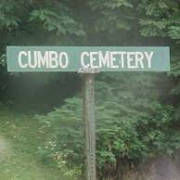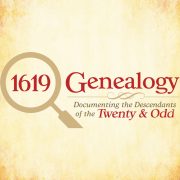Chronology of the 1619 Africans
To Commemorate the 399th Anniversary of the Arrival of the First Africans in English America, a portion of the chronology from UNVEILED, The Twenty & Odd is being released.
Chronology of the 1619 Africans
From : UNVEILED – The Twenty & Odd
Documenting the First Africans in England’s America 1619-1625 and Beyond
By: K. I. Knight © All rights reserved.
1. In the summer of 1619, the San Juan Bautista, a Spanish galleon sailing to the Port of Veracruz with a full underbelly of enslaved Angolans was fired upon by two English corsairs in the Bay of Campeche. The two English captains took 60 Africans and sailed for Virginia. The Bautista’s Captain reported the piracy on August 25, 1619. (Engel Sluiter, UCBerkley) Note: The Bautista was a Spanish galleon-type warship, built in Japan in 1613. This type of warship was not known to transport slaves. Therefore, one would have to conclude the two English corsairs were searching for Spanish Treasurer, not slaves. (Unveiled – The Twenty & Odd K I Knight; The Battle of the San Juan Bautista by Richard C. Moore. Commissioned 2011 by Knight; San Juan Bautista specifications – San Juan Bautista Museum, Ishinomaki Japan)
2. The latter part of August 1619 the White Lion arrived on the shores of Point Comfort where the English Captain Jope sailing under the Dutch/Flemish marque brought nothing but “twenty & odd” Africans which he sold to the Governor and Cape Merchant for victual. (John Rolfe Letter January 1620.)
3. The Treasurer arrived four days later. Due to an expired marque, Point Comfort’s Commander William Tucker sends for the Governor’s permission for the Treasurer to land and sell her cargo. As the Governor’s men Wm. Ewens and Wm. Pierce returned to bring the English ship upriver to Jamestown, the Treasurer was sailing out into the Atlantic. (John Rolfe Letter January 1620.)
4. September 15, 1619. Captain William Ewens patents 400 acres on the south-side of the James River based on his recently landed headrights. (WMCQ) Note: The date is two weeks after the arrival of the White Lion. At least three to four (3-4) Africans are known to be associated with this land.
5. The Treasurer arrives October 20, 1619 in Bermuda bringing 29 Negros, 2 chestes of graine, 2 chests of wax, a small quantity of tallow, little worth. (John Dutton to the Earl of Warwick letter January 20, 1620.)
6. Because of the Treasurer’s expired commission from the Duke of Savoy, the ownership of the Africans was an ambiguous legal matter to be settled at a later date. (The Rich Papers, Ives 140)
7. October 1619. The Garland arrives in Bermuda from a long and sickening journey to Virginia, to replenish its supply and allow its passengers to recover. (History of Bermuda, Lefroy 157)
8. November 1619. A hurricane hits Bermuda and destroys the Warwick which brought the newest governor to Bermuda, a month prior. The Warwick had been contracted by the Company to return Bermuda’s harvest of tobacco to England. (History of Bermuda, Lefroy)
9. In the Governor’s meeting with his council, Bermuda’s Governor Butler orders the Garland’s Captain to return to England with the Company’s crop and the Treasurer will take the Garland’s passengers on to Virginia in her stead. Governor Butler then ordered the Treasurer to be rigged and refit. (Lefroy 157)
10. 1620 Census discovered in the Ferrar papers shows 32 Africans in the settlement of Virginia.
11. 1621. In Bermuda, Governor Butler places three Africans – Antonio, Maria, and John Pedro aboard the ship James, sailing for England. Five weeks later, the James arrived at the port of Southampton and the three Africans were taken to Earl of Warwick’s great manor at Leez Priory in Felstead, Essex. (Hashaw: Butler to Warwick October 1620, Ship Manifest)
12. 1621 Antonio arrives on the James from England and is placed on Bennett’s plantation. (Hotten, Hashaw, Ship manifest.)
13. March 22, 1622 – The Great Indian Massacre.
14. From the List of the Living and Dead dated February 1623 the following Africans are recorded in the Virginia settlement.
a. Eleven (11) Africans living at Flowerdew. Five of these Africans – Anthony, John, William, Anthony and an unnamed negro woman were Piersey’s and the other six were Governor Yeardley’s contracted to Dr. Woodson. Dr. Woodson and his wife Sarah were living at Flowerdew.
b. Two (2) unnamed Africans living at George Yeardley’s residence in Jamestown.
c. Four (4) Africans living at Warrasqueak, Anthony, Margaret, Peter and Frances.
d. Two (2) Africans living at William Tucker’s household, Antony and Isabella.
e. One (1) African living at Ye Neck of Land in Kingsmill’s residence, Edward
f. One (1) African living at Matthews Plantation over against James City, Jiro.
g. One (1) African living at the Treasurer’s plantation, Angelo/Angela.
h. One African listed as dead.
15. The location and numerical changes of the Africans from February 1623 to the February 1625 Muster are few.
a. Baby William Tucker born to Isabella and Antony in Tucker’s residence.
b. Maria/Mary who arrived after the massacre of 1622 from England on the Margaret and John was eventually recorded at Bennett’s Welcome by 1624.
c. John Pedro arrived on the Swan in 1623 and living on the Eastern Shore.
d. Peter and Frances at Bennett’s Welcome return to Piersey’s Floridew plantation and become documented as Negro woman with young child of hers.
e. Angelo/Angela is found in Jamestown at Captain William Pierce’s residence. Pierce and Angela/Angelo were living at the Treasurer’s plantation in 1623.
16. September 1625. Lady Temperance Yeardley receives temporary custody of Brass, a Negro man sold to Captain Nathaniel Bass by Captain Jones. Lady Yeardley was ordered to pay Brass forty pounds of tobacco per month he was in her employee. On October 3, 1625 the court gives Governor Francis Wyatt custody of Brass. (Minutes of the Council and General Court of Colonial Virginia.)
17. The ship Saker arrives in Virginia in 1627 delivering nothing but one (1) African to William Ewens Plantation on the south side of the James known as the College Land. (Coldham; Ewens vs. Saker.) Note: By 1627 William Ewens had patented 1000 acres of land.
18. The Last will and Testament of Sir George Yeardley shows the same eight (8) Africans as listed earlier to be sold. They aren’t listed as chattel, slaves, or servants, but in a separate ambiguous class of their own, Negros. (Library of Virginia, Special Collection.)
19. 1628. The Fortune, captained by Author Guy, arrives in Jamestown with 100 Angolans stolen from a Spanish vessel.
20. Changes in the laws begin in October 1629. “All those that worke in the ground of what quality or condition soever, shall pay tithes to the minister”. (Henning)
21. 1630 An Englishman Hugh Davis was whipped and made to apologize before an assembly of Negroes and others, for laying with a Negro. (Henning)
22. 1635 An African woman is used for a headright, suggesting servitude. (Nugent)
23. Additional changes in the laws against the Negro. January 1640. All people “except negroes” are to be provided with firearms and ammunition. (Henning)
24. July 1640, three runaway servants were retrieved from Maryland, a Dutchman, a Scot, and the Negro, John Punch/Bunch. The two Europeans received additional time added to their contracts for their punishment. John Punch/Bunch received additional service for the time of his natural life here or elsewhere. (Minutes of the Council and General Court of Colonial Virginia; Clive Roberson’s Notes.)
25. October 17, 1640 “Whereas Robert Sweat hath begotten with child a negro woman servant belonging unto Lieutenant Sheppard, the court hath therefore ordered that the said negro woman shall be whipt at the whipping post and the said Sweat shall tomorrow in the forenoon do public penance for his offence at James City church in the time of divine service according to the laws of England in that case provided.” (Virginia Council and General Court Records 1640-1641), Note: There was a general law against fornication that applied to all members of the colony. There are other cases which the woman, regardless of race, is whipped with the man receiving a lesser punishment. Additional note: notice she is called a servant – not a slave. (McIlwaine, Minutes of the Council; Clive Roberson’s Notes.)
26. March 31, 1641-Suit of John Gowen:
“Whereas it appeareth to the court that John Gowen, being a negro servant
unto William Evans, was permitted by his said master to keep hogs and make the best benefit thereof to himself provided that the said Evans might have half the increase which was accordingly rendered unto him by the said negro and the other half reserved for his own benefit: And whereas the said negro having a young child of a negro woman belonging to Lt. Robert Sheppard which he desired be taught and exercised in the church of England, by reason whereof he, the said negro did for his said child purchase its freedom of Lt. Sheppard with the good liking and consent of Tho: Gooman’s overseer as by the deposition of the said Sheppard and Evans appeareth, the court hath therefore ordered that the child shall be free from the said Evans or his assigns and to be and remain at the disposing and education of the said Gowen and the child’s godfather who undertaketh to see it brought up in the Christian religion as aforesaid.” (McIlwaine, Minutes of the Council; Clive Roberson’s Notes.)
27. April 1641. John Gowen indentures his son Mihill to Christopher Stafford. Gowen knew how to maneuver through the English legal system. This one indenture would begin the process to guarantee the freedoms of some of the first Africans in Virginia. October 25th, 1657. In a legal statement by Anne Barnhouse. “Bee itt known unto all Christian people that whereas Mihill Gowen Negro of late servant to my Brother Xopher Stafford deced by his last will & Testament bearing Date the 18 of Jan 1654 had his freedom given unto him after the expiration of 4 years service unto my uncle Robert Stafford Therefore know all whom itt may concern that I Anne Barnehouse for divers good couses mee hereunto moving do absolutely quitt & discharge the sd Mihill Gowen from any service & for ever sett him free from any claim of service either by mee or any one my behalf as any part or parcell of my Estate that may be claimed by mee the said Amy Barnhouse my heyres Exers Admrs or Assignes as witness my hand this 25 Oct 1657 Amy (AB) Barnhouse Bee itt knowne unto all Xcian people that I Ame Barnehouse of Martins hundred widdow for divers good causes & consideracons mee hereunto moving hath given unto Mihill Gowen Negro he being att this time servant unto Robert Stafford a Male child borne the 25 August 1655 of the body of my Negro Prossa being baptized by Mr. Edward Johnson 2 Sept 1655 & named William & I the said Amy Barnhouse doth bindmy selfe my heyres Exer Admr & Ass never to trouble or molest the said Mihill Gowin or his sone William or demand any service of the said Mihill or his said son William. In witness where of I have caused this to be made & done I hereunto sett my hand & Seale this present 16 Sept 1655 Amy (AB) Barnhouse.” (DWO 3:16; Heinegg)
28. March 1643. Changes in Tax/Tithables. All males of the age of 16 yrs and older and all Negro Females 16 years of age and older shall be taxable. (Hening)
29. September 30, 1643 William Ewens re-certifies his original patent from September 1619. 1,100 acs., James City Co., Page 904. His headrights include Michael a Negro, Katherine his wife, John Grasheare a Negro, Mathew a Negro. Note: This is the same John Grasheare/Gowen/Gaeween as listed in items 15, 24, and 25. Those noted here were not recorded in any of the population census’ of the 1623, 1624, 1625. (Nugent)
30. February 1645. All men between the ages of 16 and 60, and all African men and women shall be tithable. (Hening)
31. May 1645. Emmanuel Driggers indentures his adoptive daughter Jane, at the age of one year old to be bound to Captain Francis Pott to serve him until the age of thirty-one. (Northampton County Records) Note: A slave would not be allowed to indenture his child.
32. Emmanuel Driggers, a slave of Francis Pott on his plantation in Magotha Bay, Northampton County, Virginia. On 27 May 1645, purchased a cow and calf from Pott and recorded the sale in the Northampton County court. (DW 1645-51, 82); Heinegg.
33. It was written, Driggers was a slave. However, with the evidence above regarding Emanuel Driggers’ ability to indenture his own daughter, you must question the 17th century meaning of the word “slave.” To demonstrate my point further, would a slave be allowed to own, buy, and sell livestock at his ease? With respect, the term is not always accurate as to today’s definition and/or perception of slavery. In addition, the following is a list of additional transactions where Driggers demonstrated such lack of restriction.
a. Emmanuel Driggers and his wife Frances were assigned to Stephen Charlton in 1649 to pay Pott’s debt to Charlton. On 30 December 1652 his former masters, Francis Pott and Stephen Charlton, clarified the status of the cattle he and Bashaw Fernando acquired while they were servants (slaves), declaring that “ye said cattle, etc. are ye proper goods of the sd Negroes.” (DW 1651-54, 28, 114); Heinegg.
b. On 16 September 1661 he sold a black heifer to Joan, daughter of Peter George. (DW 1657-66, fol.123; Heinegg).
c. By 1 October 1661 he had married his second wife Elizabeth, with whom he made a deed of jointure in which he gave her a three-year-old mare and its increase (Orders 1664-74, fol.75, p.78; Heinegg).
d. Emmanuel Driggers was called “Manuell Rodriges” in 1660-1663 when he was head of a Northampton County household, taxable on 3 tithes (Orders 1657-64, 102, 176; Heinegg).
e. In 1665 Emmanuel Driggers leased 245 acres for ninety-nine years from his former master, William Kendall, and in 1672 assigned the unexpired part of the lease to John Waterson. (Whitelaw, Virginia’s Eastern Shore, 151,152; Heinegg)
34. June 1650. John Upton renews his patent using Anthony Johnson and Mary Johnson as headrights from his original patent July 7, 1635. (Nugent)
35. July 1651. Anthony Johnson, a free negro, patents 250 acres in Northampton County. (Northampton County Records. Patent Book 2 page 326.)
36. May 24, 1652 when Jane Driggers was eight years old, her adoptive father Emmanuel Driggers paid Captain Francis Pott for her freedom. (Northampton County Records.)
37. March 1655. Anthony Johnson goes to court to retain his servant John Casor. (Northampton County Records.)
38. January 1656. Elizabeth Key, a negro girl sued for her freedom. Her father a white man, her mother a negro. Key won her freedom with the free status of her free European father and the notation of her baptism. (Northumberland County Records.)
39. March 1658. Tax/Tithes Law changes. All male servants and all negro males and females shall be considered tithable. (Hening)
40. 1659. Mary Ewens, widow of William Ewens inherits the Africans – Michael, Katherine, and their 6 children. Rebecca, Frances, Amos, and Susanna, with the youngest child unnamed and residing at the College Land, Surry, County. (Last Will & Testament of William Ewens)
41. December 1662. Condition of the Mother. General assembly declared all children born in this country shall be held in bond or free only according to the Mother’s condition. (Hening)
42. By 1662 there was a sizable community of free Africans paying their own tithes and living in their own homes in Northampton County, Virginia. (Bell)
43. April 1667 Emmanuel Cambew/Cambo/Cambow, an African man patented 50 acres. (Patent Book 6 page 39)
44. September 1667. Legislation for slavery was further insured when a law was enacted stating the status of baptism no longer can alter the person’s bondage or freedom. (Hening)
The first Africans to arrive in the English settlement of Virginia held an ambiguous status. Claimed as bounty during an English/Spanish piracy raid in the Bay of Campeche and sold for victual in a settlement where slavery was not yet legal. These first Africans faced an up-hill battle to claim their freedom which we know through documentation, some attained. In the early years their status wasn’t the prevalent issue. The skills of survival eclipsed all and these Africans knew how to survive. From their homeland, they possessed the knowledge to grow crops and raise livestock. Something most Europeans knew nothing about. From the earliest records more than 10,000 English men and women came to Virginia. In 1623, after the Great Massacre of 1622, only 347 remained. With the knowledge of these Africans, the young English colony of Virginia survived and eventually thrived. With the 400th anniversary of their arrival – all of America should feel indebted to those who stood resolute in the darkness of their fateful journey.
It’s time for the TRUTH to be told.
Unveiled, the Twenty & Odd documents the first Africans in the English settlement of Virginia from 1619 – 1625 and beyond. K. I. Knight 2018 © All rights reserved.




